Convergent synthesis of diversified reversible network leads to liquid metal-containing conductive hydrogel adhesives
- PMID: 33893308
- PMCID: PMC8065207
- DOI: 10.1038/s41467-021-22675-2
Convergent synthesis of diversified reversible network leads to liquid metal-containing conductive hydrogel adhesives
Abstract
Many features of extracellular matrices, e.g., self-healing, adhesiveness, viscoelasticity, and conductivity, are associated with the intricate networks composed of many different covalent and non-covalent chemical bonds. Whereas a reductionism approach would have the limitation to fully recapitulate various biological properties with simple chemical structures, mimicking such sophisticated networks by incorporating many different functional groups in a macromolecular system is synthetically challenging. Herein, we propose a strategy of convergent synthesis of complex polymer networks to produce biomimetic electroconductive liquid metal hydrogels. Four precursors could be individually synthesized in one to two reaction steps and characterized, then assembled to form hydrogel adhesives. The convergent synthesis allows us to combine materials of different natures to generate matrices with high adhesive strength, enhanced electroconductivity, good cytocompatibility in vitro and high biocompatibility in vivo. The reversible networks exhibit self-healing and shear-thinning properties, thus allowing for 3D printing and minimally invasive injection for in vivo experiments.
Conflict of interest statement
The authors declare no competing interests.
Figures



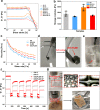
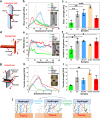
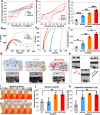
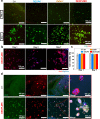

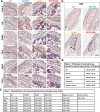
Similar articles
-
An anti-infective hydrogel adhesive with non-swelling and robust mechanical properties for sutureless wound closure.J Mater Chem B. 2020 Jul 8;8(26):5682-5693. doi: 10.1039/d0tb00640h. J Mater Chem B. 2020. PMID: 32500887
-
Engineering an adhesive based on photosensitive polymer hydrogels and silver nanoparticles for wound healing.J Mater Chem B. 2020 Jul 14;8(26):5756-5764. doi: 10.1039/d0tb00726a. Epub 2020 Jun 10. J Mater Chem B. 2020. PMID: 32519734
-
Antibacterial, Self-Adhesive, Recyclable, and Tough Conductive Composite Hydrogels for Ultrasensitive Strain Sensing.ACS Appl Mater Interfaces. 2020 May 13;12(19):22225-22236. doi: 10.1021/acsami.0c06091. Epub 2020 May 4. ACS Appl Mater Interfaces. 2020. PMID: 32315157
-
Electroconductive hydrogels: synthesis, characterization and biomedical applications.Biomaterials. 2010 Apr;31(10):2701-16. doi: 10.1016/j.biomaterials.2009.12.052. Epub 2010 Jan 8. Biomaterials. 2010. PMID: 20060580 Review.
-
Recent Advances in Metal-Containing Polymer Hydrogels.Macromol Rapid Commun. 2017 Jul;38(14):10.1002/marc.201700109. doi: 10.1002/marc.201700109. Epub 2017 May 26. Macromol Rapid Commun. 2017. PMID: 28547817 Free PMC article. Review.
Cited by
-
Recent progress in multifunctional, reconfigurable, integrated liquid metal-based stretchable sensors and standalone systems.Prog Mater Sci. 2024 Apr;142:101228. doi: 10.1016/j.pmatsci.2023.101228. Epub 2023 Dec 14. Prog Mater Sci. 2024. PMID: 38745676 Free PMC article.
-
Kneading-Inspired Versatile Design for Biomimetic Skins with a Wide Scope of Customizable Features.Adv Sci (Weinh). 2022 May;9(14):e2200108. doi: 10.1002/advs.202200108. Epub 2022 Mar 22. Adv Sci (Weinh). 2022. PMID: 35315242 Free PMC article.
-
Mussel-inspired resilient hydrogels with strong skin adhesion and high-sensitivity for wearable device.Nano Converg. 2024 Mar 21;11(1):12. doi: 10.1186/s40580-024-00419-4. Nano Converg. 2024. PMID: 38512587 Free PMC article.
-
Bio-macromolecular design roadmap towards tough bioadhesives.Chem Soc Rev. 2022 Oct 31;51(21):9127-9173. doi: 10.1039/d2cs00618a. Chem Soc Rev. 2022. PMID: 36269075 Free PMC article. Review.
-
Bioelectric and physicochemical foundations of bioelectronics in tissue regeneration.Biomaterials. 2025 Nov;322:123385. doi: 10.1016/j.biomaterials.2025.123385. Epub 2025 May 2. Biomaterials. 2025. PMID: 40367812 Review.
References
Publication types
MeSH terms
Substances
LinkOut - more resources
Full Text Sources
Other Literature Sources

